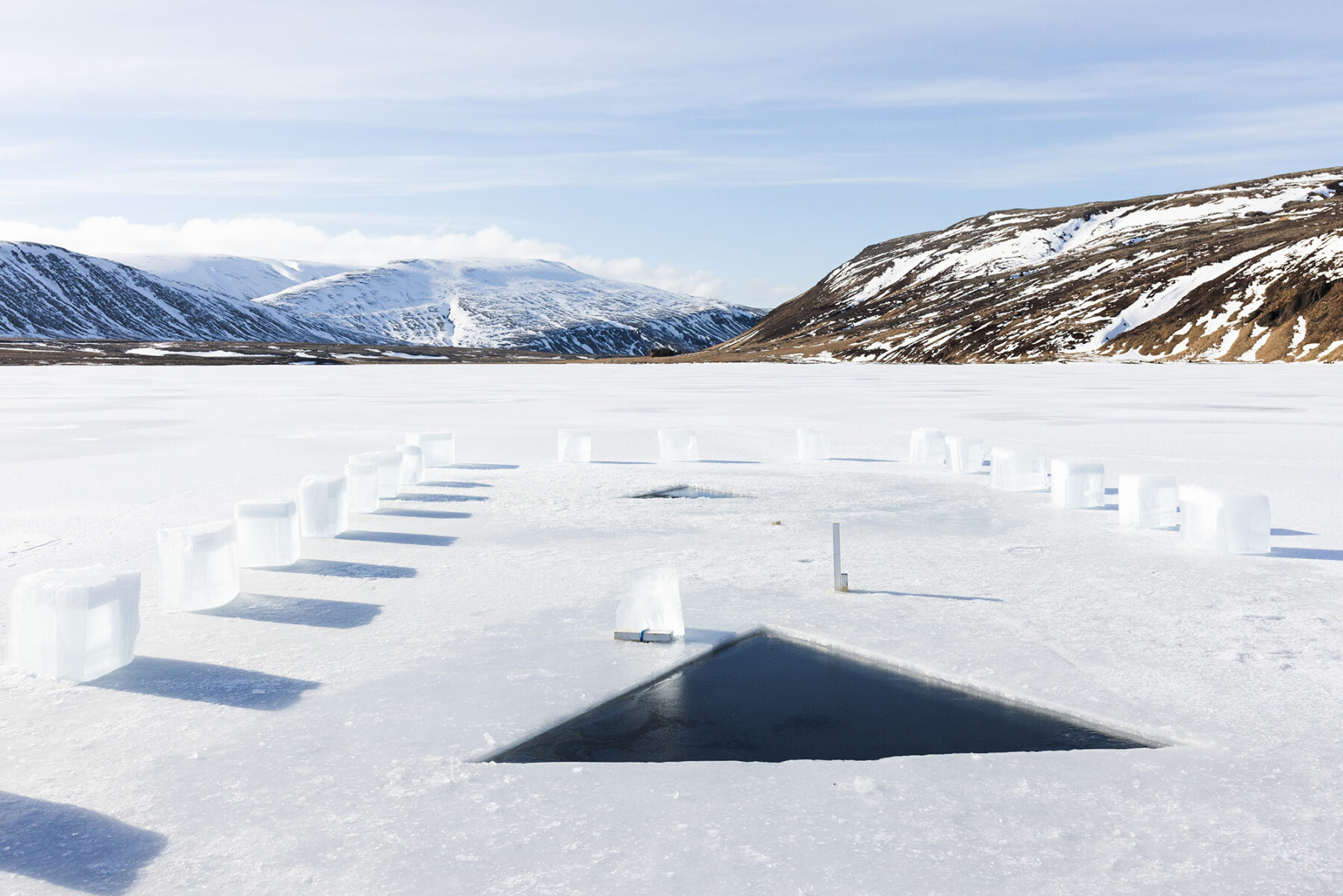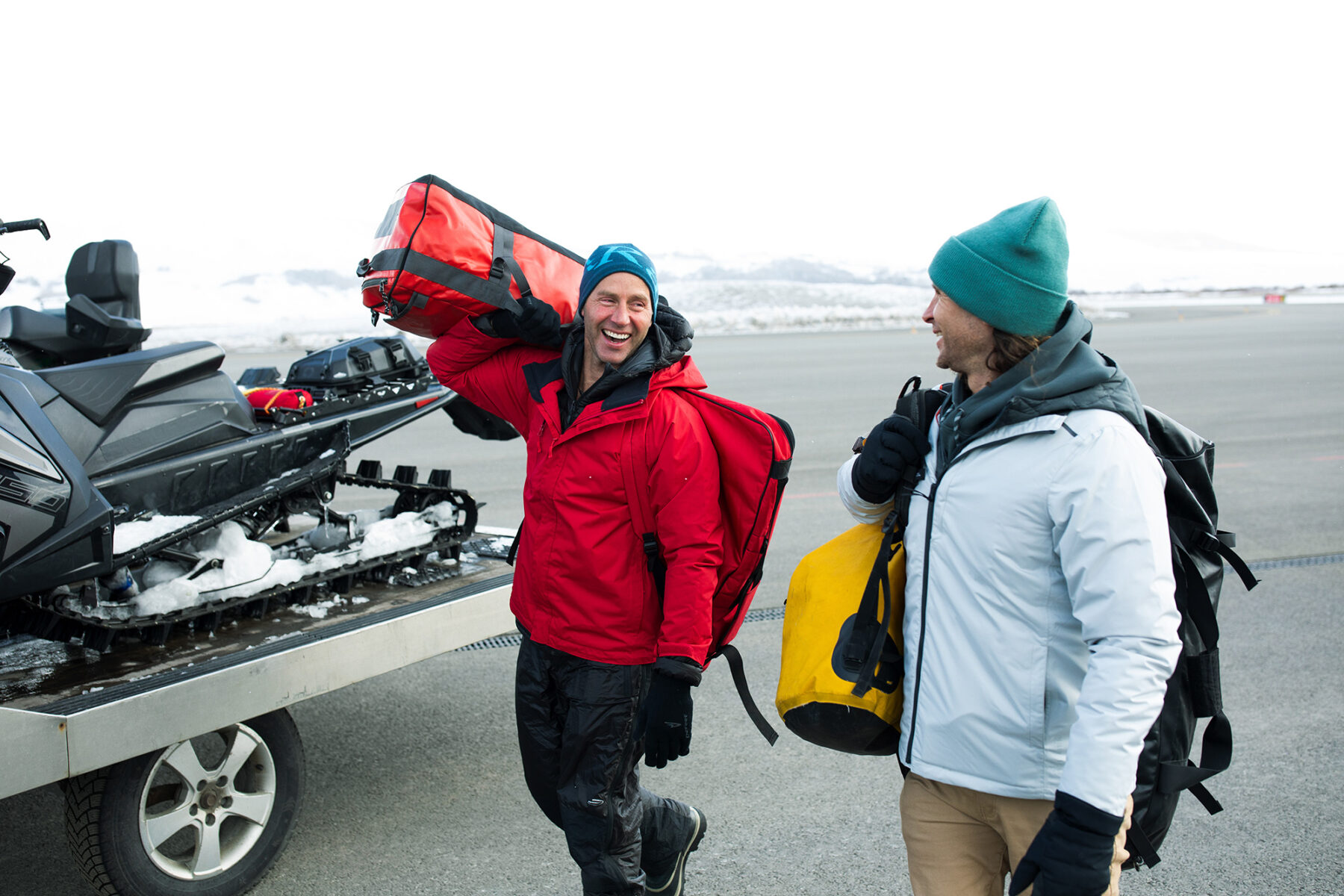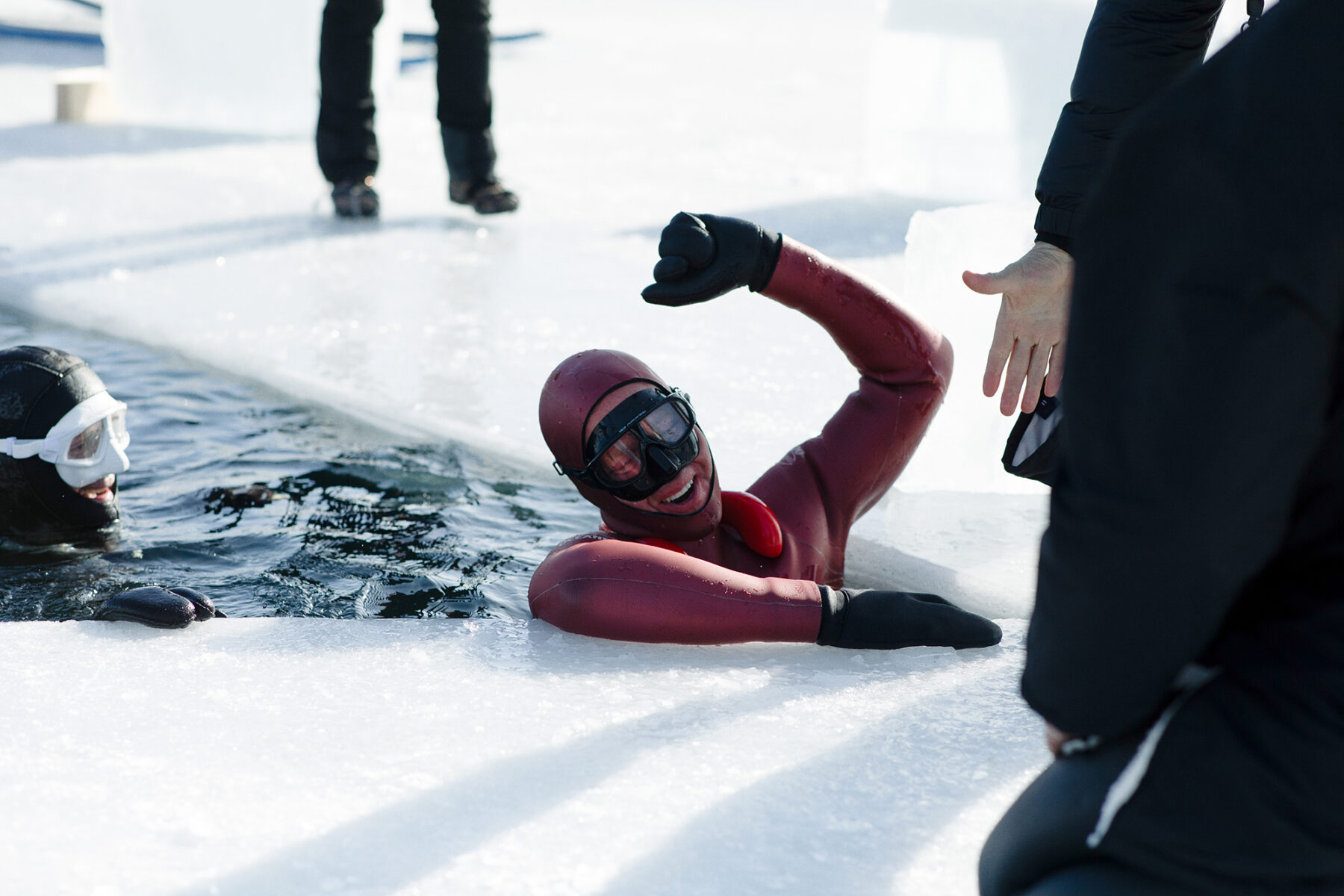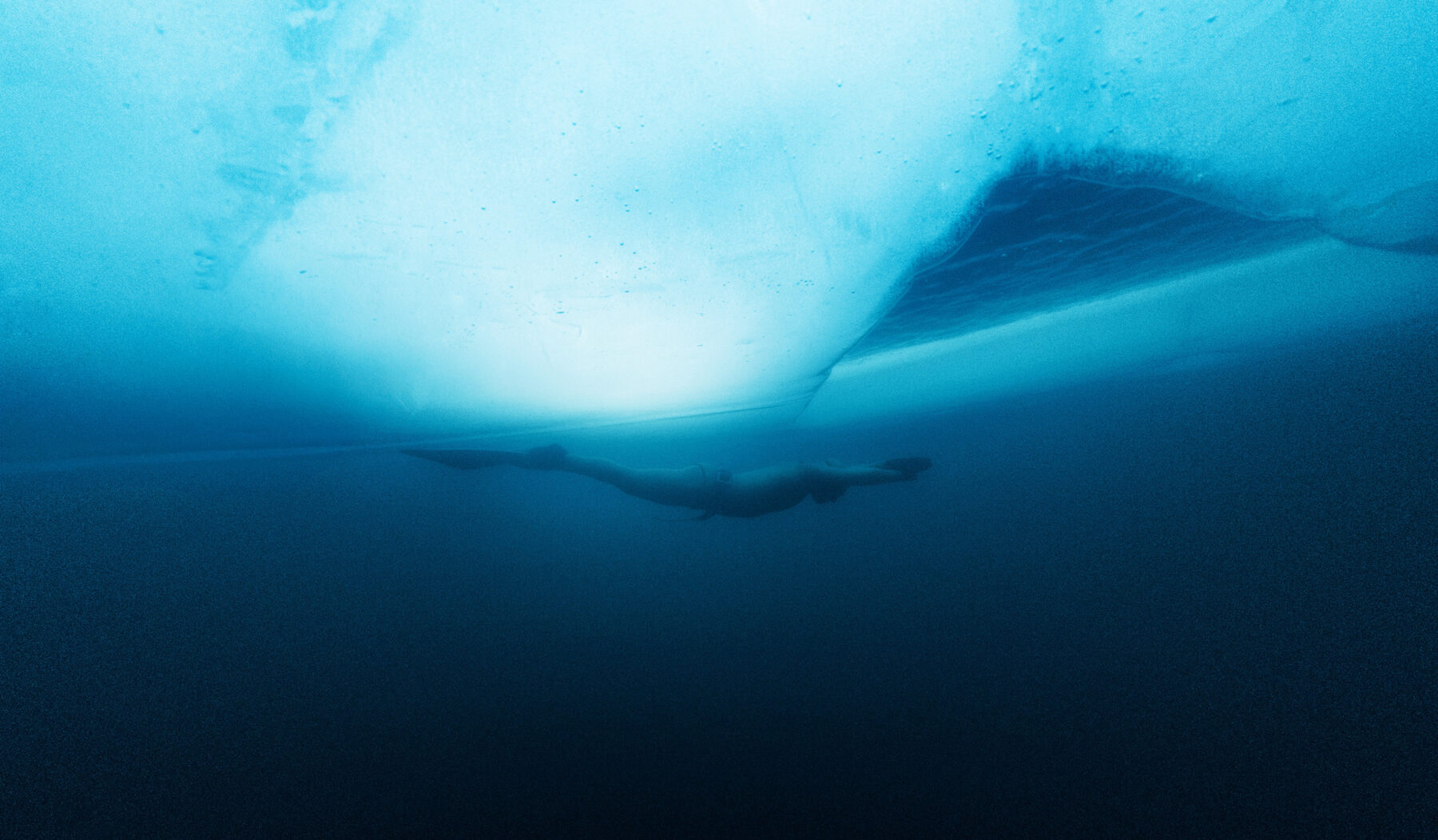Ant Williams is not your average freediver. He’s not some genetically gifted fish-man, nor did he grow up with a monofin strapped to his feet. He started late, trained himself to world-class level, and, in true overachiever fashion, decided regular freediving wasn’t extreme enough—so he took it under the ice.
But before Ant became a world record holder, he was a sports psychologist working with elite athletes like MotoGP riders, big-wave surfers, and extreme sports competitors, all operating at the edge of human performance. He spent years helping them push past fear, sharpen their focus, and stay calm under pressure. And yet, despite coaching others, he felt like a fraud.
“I’d worked with these high-risk athletes, but I’d never tested myself in that kind of environment. I wanted to understand—what does it really feel like to perform at the absolute limit?”
That question led him to freediving. Not because he had a lifelong love for the ocean but because it was, in his words, “I think I was attracted to the more extreme end of sports.”
Of course, freediving wasn’t the only option he considered.
“Not many people sit down and go, ‘Bullfighting, wingsuit flying, or freediving?’”;”Yeah, awkward choices, right?”
It turns out that dodging an angry, two-tonne beast or jumping off a cliff with nothing, but a parachute wasn’t quite the right fit. Freediving won out. Fast-forward a couple of decades, and Ant is no longer wondering what performing under pressure is like. He’s set multiple world records, including the deepest freedive under ice (70.3m in Norway, 2019) and the longest distance swum under ice (182m in Iceland, 2024); both on a single breath.
And now, thanks to Apple Vision Pro, the world is about to experience those feats in a way never seen before.
From sports psych to world-record freediver
If you’ve ever watched an elite athlete perform under pressure and thought, “How do they stay so calm?” that was Ant’s job.
As a sports psychologist, he worked with some of the world’s most fearless competitors, helping them overcome self-doubt, manage fear, and find that elusive flow state. A key part of his coaching was what he called ‘time minus one’—the moments just before performance, when doubt and anxiety are at their peak.

“We get really fixated on the performance moment— ‘Can I do it? Will I be okay? What will people think?’ But Grovian psychology says—put that to one side. Instead, focus on ‘time minus one,’ the moments before—the two or three minutes before it happens. Start unpacking what’s happening for you in those moments.”
But no matter how much he understood about the psychology of performance; he had a nagging feeling:
“I was giving these athletes advice, but deep down, I felt like a fraud. I’d never actually been in their shoes. I’d never felt what it was like to risk everything in the moment.”
Most people in this situation might take up skydiving, rock climbing, or even ultra-marathons. Ant Williams, however, opted for freediving—a sport that demands not only athletic ability but also complete mental control. At first, it was a personal challenge—a way to prove to himself that he could push his limits. But soon, he started competing. And winning.
That’s when he had another realisation.
“I went to my first world championship in Cyprus, and they gave us t-shirts that said ‘ATHLETE’ on the back. I remember thinking, ‘I can’t wear this; that’s not true.’”
But as his freediving rankings climbed, it became undeniable that he wasn’t just studying and training elite athletes anymore. He was one.
The Laird Hamilton influence: A shift in mindset
At a pivotal moment in his freediving career, Ant Williams had the chance to meet Laird Hamilton, a man who, if you don’t know, is essentially the Jedi Master of big-wave surfing. Laird is a pioneer of extreme water sports, someone who has never been interested in competition but instead in pushing the absolute boundaries of what’s possible in the ocean. That mindset struck a chord with Ant.
“I asked him, ‘How is it that you’re still so relevant? You don’t compete; you’re an older guy, and yet all the focus should be on younger, fitter, hot-shot athletes. But still, the world wants to know what Laird Hamilton is doing.’”
Laird’s response?
“I don’t play in that space. I’m not interested in competition. I’m interested in going out, finding where the limit of the sport is, and playing there. Because that’s where you learn about new equipment, new techniques, and that’s where you start to learn about yourself again.”
That philosophy changed everything for Ant. Rather than just competing to be the best, he realised that what excited him most was pushing the edges of the sport itself. It’s why he didn’t just stick to freediving but went into ice diving, a world few had dared explore.
The Ice Challenge: A new level of fear for Ant Williams
After years of traditional freediving, Ant Williams did what any reasonable person would do when they get too comfortable; he made it harder.
“I started thinking, ‘What’s the outside limit of an extreme sport like freediving?’”
His answer? Freediving under ice.
Cold-water freediving is brutal. Your body reacts instantly. The shock triggers an automatic gasp reflex (not ideal when you’re holding your breath). Blood rushes to your core in a desperate attempt to keep your organs warm. Your limbs go numb, and your mind starts screaming to escape.
Now imagine swimming over 180 metres under a frozen lake, with no exit except for some spaced-out escape holes you cut in the ice. That’s precisely what Ant did in March 2024, when he set the world record for the longest distance swum under ice, covering 182 metres in Iceland’s Lake Stiflisdalsvatn, where water temperatures hovered around 0.2°C.

Taking freediving to the Arctic isn’t just about enduring cold water; it’s about stepping into an environment designed to break even the most disciplined minds. Freediving in warm, clear tropical waters is already an extreme challenge, but under the ice, everything changes. The cold is only part of the problem. The real battle is against fear—and the darkness.
“The ice itself is about half a metre to 0.8 metres thick. Then, on top of that, there’s often a frozen crust layer. Sometimes, there’s also a metre of snow. So, when you go under, within just a metre of depth, it’s pitch black.”
“And I mean, black. It’s a level of darkness that’s hard to comprehend. You don’t often experience darkness like that, because there’s always some ambient light—streetlights, moonlight, something. But under the ice? There’s nothing. It’s stripped back to pure, absolute blackness.”
That kind of darkness messes with your head. Even the most experienced freedivers rely on visual cues—the surface, the rope, the light filtering through the water. Under the ice, there’s nothing to orient yourself. And when that darkness combines with the mind’s instinct to panic, it quickly becomes a fight against fear itself. Even Ant wasn’t entirely convinced the dive would be successful. The sheer distance, the conditions, and the extreme cold left little margin for error. He was blunt with the production team filming his record attempt about the likelihood of failure.
“I told the production team, ‘The chances of me pulling off this dive to 182 metres in this timeframe is between three and five per cent.’”
“So, I asked them, ‘Are you okay with the fact that you’re probably going to be filming a blackout and a rescue?’
Even on the day of the record attempt, doubts lingered. The production team needed to know exactly where he would surface to capture the moment.
“So, the director, Charlotte Mikkelborg comes up, and she goes, ‘Where are you going to come up?’”
“I was like, ‘182.’”
“She goes, ‘No, I need you to tell me, in all honesty. I have to put the camera in the right place.’”
There was no alternate plan. No early exit. Just one breath and the full 182 metres. Bets were already being placed on whether he would make it. But fear wasn’t the only thing trying to sabotage the dive. Ice diving came with an entire catalogue of unexpected challenges – some serious, some just ridiculous.

“So, I go to put on my monofin, and I don’t wear booties because I want exact connection – I want as much power as possible. So, no booties. But I look down, and the monofin has been sitting there for 15 minutes, and the foot pockets are now white. I’m like, ‘Why are they white?’ ‘Oh, they’re frozen.’”
“I think, ‘Okay, I’ll just use soap, then.’ And they go, ‘No soap. The soap is frozen too.’”
Even the most basic freediving routine became a logistical nightmare in the Arctic cold. Ant had a standard pre-dive routine: remove his mask, check the lenses, and put it back on his head before diving. In warm water, this was muscle memory. In Iceland, the dive nearly ended before it began.
“So, I do that. Just part of my process. Then I go to put it on, and… it’s a frozen solid block of ice on both sides. Just completely white. I just look at it and go, ‘What am I supposed to do with this?’ And Antero Joki [A Finnish freediving instructor and coach] is like, ‘Yes, you must get in the water. You must dive down, put your mask on, then you must flood it. Breathe out all your air, yeah, and then wait. It will clear. Then come back to the surface and do not touch it!’”
Even something as simple as resting a hand on the ice could turn into an ordeal.
“If you take your glove off and put your hand on the ice at that temperature, your hand will stick to the ice.”
Each of these small, seemingly ridiculous challenges piled up, turning a standard freedive into a test of mental resilience long before he even reached the water. To top it all off, the dive didn’t start well. From the moment he submerged, Ant found himself battling panic. The usual mental coach he had trained for years – the one that kept him calm, methodical, and focused – was nowhere to be found. Instead, his brain flooded with doubt.
“The first half of my dive under the ice – I didn’t have that coach on my shoulder, the one I’ve trained with for years. He was gone.”
Under the ice, where there were no visual cues, no warm-water buoyancy, and no escape except for scattered holes cut into the frozen surface, the fear took hold. The darkness made it worse.
“When you add that fear factor, your body wants to breathe sooner, your heart rate jumps, and your ability to manage oxygen becomes compromised.”

The mind of Ant Williams kept fighting against itself, second-guessing every movement. But then, something shifted. Somewhere in the second half of the dive, a strange calm set in. His breathing reflex disappeared, his movements became fluid, and his mind cleared. The panic faded, replaced by a deep sense of control, he’d discovered the elusive ‘flow state’. when he eventually surfaced with a New World record, he was in complete control.
“Oh yeah. Oh yeah, I had loads left. I came up feeling like I didn’t even need a breath. I had no signs of discomfort, no signs of fatigue. My legs were fine, my air management was perfect, my technique was on point – everything had streamlined. I was super relaxed.”
It was a reminder of what he had always known – freediving is won or lost in the mind.
Apple Vision Pro: Bringing the ice dive to life
For most people, watching freediving on a screen is already intense, but experiencing it on Apple’s new Immersive Video is mind-blowing.
The remarkable 180-degree media format leverages ultra-high-resolution immersive video and spatial audio to place viewers at the centre of the action. The groundbreaking new tech brings viewers closer than ever to the raw intensity of freediving under ice; instead of just witnessing Ant’s record-breaking dive, viewers can truly experience it.
Even for someone like me, who has faced some pretty intense situations in my job photographing and documenting extreme sports, my mind was genuinely blown. in fact, I wrote to Apple immediately after my experience of watching Ant Williams set that record with the words,
“The immersive video was next level. As someone who tells stories for a living, I left the room questioning everything I know about photography, cinematography, and how we’ll be creating in the future.” but it wasn’t just me.
Ant himself was blown away when he saw the final footage.
“The first half of the film, I just got sucked in – completely drawn in. I felt like I was there. Those opening shots – man, they got me. It was like I was being transported back there,” Williams said.
“It literally brought me to tears. By the end of it, I had to take a minute. My heart rate was up, probably 30 beats higher than my normal resting rate. I was choked up. I was almost in tears. It was that intense.”
His record-breaking attempt is featured in Ice Dive, the third episode of Adventure, a groundbreaking Apple Immersive Video series for Apple Vision Pro. Adventure follows pioneering athletes who take on awe-inspiring challenges in some of the world’s most spectacular locations. The series captures the extreme highs and harrowing lows of human endurance like never before.
Why do it? And, what’s next for Ant Williams?
For Ant, freediving isn’t just about records. It’s about self-discovery.
“It’s never been about winning competitions. Sure, I’ve won a few, but never the big world championships. Because that’s just not what it’s about for me. My journey has always been about asking: ‘What else can I learn? What else can I try? How else can I improve?’”
Ant isn’t reckless – he knows exactly where his limits are. After 20 years in the sport, he has developed an acute awareness of his body’s warning signals.
“My vision will go black and white. I’ll get a tingling feeling in my fingertips. And if that transfers down to my elbows, I know I have about three kicks left.”
It’s this ability to read his body that has allowed him to push boundaries without crossing the line into real danger. He trusts the signals, listens to them, and makes the call; because in freediving, ignoring those warnings isn’t an option. After 182 metres under ice, most people might call it a day. But Ant is already thinking about what’s next.
With Apple Vision Pro taking adventure storytelling to new heights, we may soon experience even more of Ant’s journey into the unknown – from the depths of the Arctic to wherever his mind takes him next.
And while I’d love to say I’ll be following his lead, let’s be real – I’ll stick to watching from the warmth of my living room, thanks.
(Watto was a guest of Apple Australia. If you’ve ever wondered what it’s like to freedive under ice, without freezing your lungs, Ant’s immersive Apple Vision Pro experience is about as close as you’ll get. Ice Dive is available on Apple TV+ for Apple Vision Pro.)
